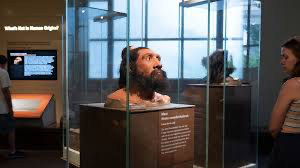Unraveling Our Genetic Heritage: The Profound Connection to Extinct Relatives like Neanderthals

Unveiling the Neanderthal Genome
In 2010, a groundbreaking scientific achievement occurred when researchers successfully sequenced the Neanderthal genome. This milestone allowed scientists to delve into the genetic makeup of our closest extinct relatives, who roamed the Earth tens of thousands of years ago. The analysis revealed that modern humans of non-African descent carry approximately 1-2% of Neanderthal DNA within their own genomes. This remarkable finding provided concrete evidence of interbreeding between Homo sapiens and Neanderthals, dispelling the notion that these two species existed in complete isolation.
Highlighting the Genetic Legacy
The presence of Neanderthal DNA in our genetic makeup has had a profound impact on our understanding of human evolution. It has helped shape our physical traits, susceptibility to diseases, and even influenced certain aspects of our cognitive abilities. For instance, several studies have found correlations between Neanderthal DNA and traits like hair and skin color, susceptibility to allergies, and even nicotine addiction. These findings underscore the lasting genetic legacy of our extinct relatives and their influence on our biological makeup.
Insights into Human Adaptation
Studying the genetic heritage of Neanderthals has also provided valuable insights into human adaptation. Neanderthals, who inhabited Eurasia for hundreds of thousands of years, had already adapted to the challenging environmental conditions of the Ice Age. By interbreeding with them, our Homo sapiens ancestors gained access to a broader genetic pool, which likely facilitated their survival and colonization of new territories. The transfer of advantageous genes, such as those related to immune response and metabolism, likely played a critical role in our ability to adapt to diverse environments.
Challenges and Limitations
While the analysis of the Neanderthal genome has yielded remarkable discoveries, it is essential to acknowledge the challenges and limitations of this research. The fragmented nature of the Neanderthal DNA recovered from ancient fossils poses difficulties in accurately reconstructing their entire genome. Additionally, the intermixing of Neanderthal and modern human DNA over generations makes it challenging to attribute specific genetic traits solely to Neanderthal ancestry. Researchers must exercise caution when drawing conclusions and interpreting the data to avoid misleading or oversimplified claims.
Beyond Neanderthals: Other Ancient Relatives
Neanderthals are not the only extinct hominins with whom we share genetic ties. Recent advancements in genomic research have revealed that our genetic heritage extends further, encompassing other ancient relatives such as the Denisovans and the newly discovered Homo luzonensis. The Denisovans, who coexisted with Neanderthals and Homo sapiens, have left traces of their DNA in the genomes of modern humans, primarily in populations from Oceania and Southeast Asia. Similarly, the discovery of Homo luzonensis in the Philippines has opened up new avenues for exploring our genetic connections to this intriguing member of the human family tree.
Implications for Understanding Human Diversity
The revelation of our genetic ties to extinct relatives has profound implications for our understanding of human diversity. It challenges the concept of a linear evolutionary progression and reinforces the notion that different hominin species coexisted and interbred throughout history. Our genetic heritage serves as a testament to the interconnectedness of various human lineages and emphasizes the importance of embracing diversity as a fundamental aspect of the human experience.
Conclusion
The exploration of our genetic heritage has unveiled a remarkable connection to our extinct relatives, such as the Neanderthals, Denisovans, and Homo luzonensis. The genetic legacy of these ancient hominins has left an indelible mark on our species, shaping our physical characteristics and influencing our ability to adapt to diverse environments. By unraveling the secrets hidden within our DNA, scientists are rewriting the narrative of human evolution, emphasizing the complex web of relationships that have shaped our species. These discoveries serve as a testament to the interconnectedness of life on Earth and inspire us to embrace our shared genetic heritage as we continue to unravel the mysteries of our own existence.